Ka tohia atu te kaupapa ki te tohi nuku ki te tohi rangi, ka rakaitia ki te piki
kotuku, te rau o te toroa. Takina te mauri, ka tau te mauri, te mauri o tēnei
kaupapa. Ka kapiti i runga e ka kapiti i raro, hui te marama, hui te ora
People are at the heart of what we do
Whāinga Matua/Purpose:
The Cancer Society of New Zealand (CSNZ)a is a non-governmental organisation (NGO) that has a unique position within the cancer continuum. As a service provider, retail supplier, researcher, funder and advocate CSNZ is an integral part of the cancer continuum and is seen as a trusted leader across the sector.
CSNZ is committed to reducing the incidence and impact of cancer for all New Zealanders. Within Aotearoa New Zealand there are some population groups who carry a disproportionate burden of cancer including higher incidence levels, mortality and impact. These cancer inequities are unfair, avoidable and amenable to intervention; thus, achieving equity across the cancer continuum is crucial.
Equity can be described as: different people with different levels of advantage require different approaches and resources to get equitable health outcomes.
CSNZ acknowledges that equitable approaches to cancer inequities first and foremost, is a critique of self. This document will inform the new strategic plan for the whole organisation with the objective of embedding equity into the architecture of the organisation. This charter will firstly describe the overarching equity goals and the approach to achieve these goals, as well as the international and national evidence that have helped formulate them. The new strategic plan will enable CSNZ to achieve the overall equity vision. The strategic and operational reorientation of this organisation will help reduce overall cancer inequities in Aotearoa New Zealand and fulfil our commitment to reducing the incidence and impact of cancer for all New Zealanders.
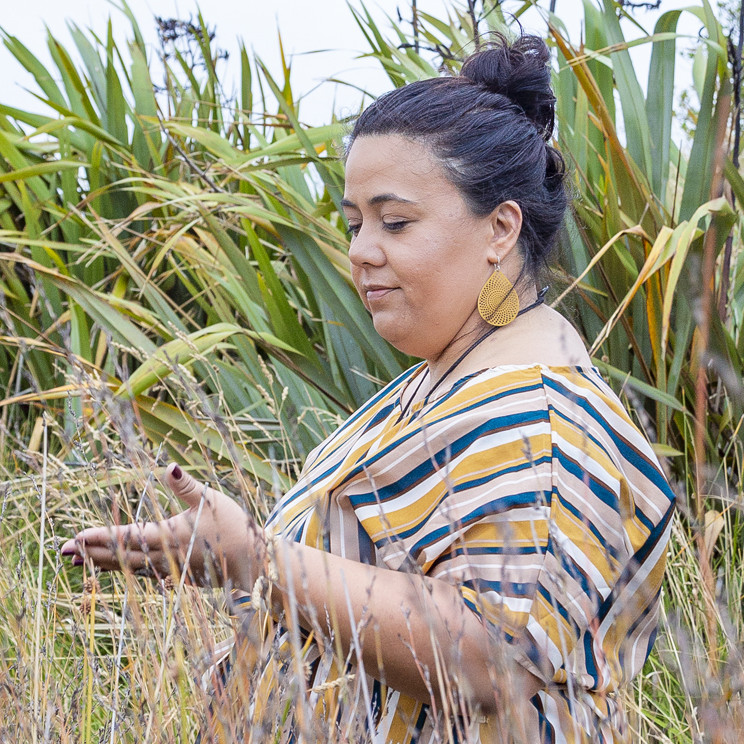
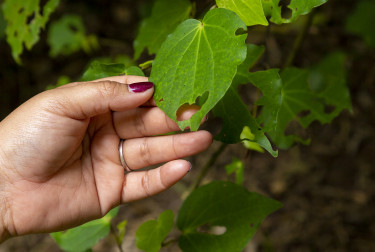
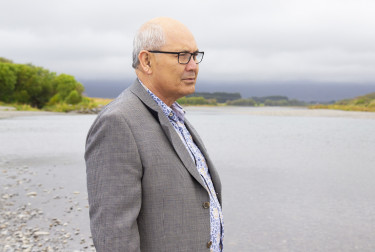
Cancer Society New Zealand’s Equity Goals
- Te Tiriti o Waitangi: Commitment and application of Te Tiriti o Waitangi is evident throughout the organisation
- Kotahitanga: Everyone is aware of and enabled to address inequities
- Mana Taurite: Equity is embedded in all policies, structures, systems and services
- Mātauranga: CSNZ funded research improves equitable cancer outcomes across the continuum for all New Zealanders
- Whaitaua: CSNZ advocacy improves equity outcomes across the continuum for all New Zealanders
- Haepapatanga ki te hapori: Accountability mechanisms are embedded throughout the organisation
- Mahi Arataki: Our equity strategies are sustained and
responsive to changing equity needs - Kaitiakitanga: Sustainable and eco-friendly processes are embedded throughout the organisation
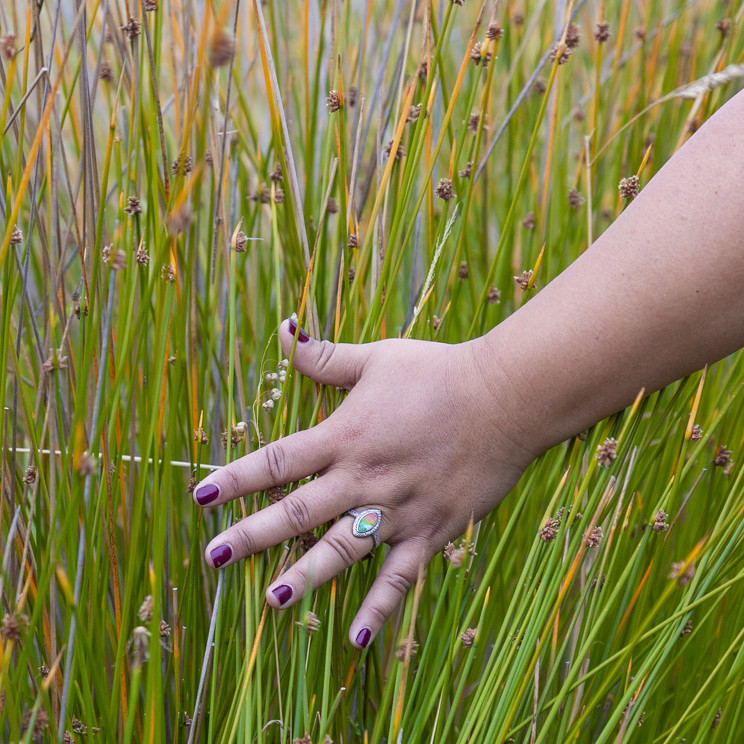
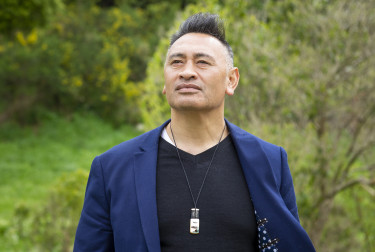
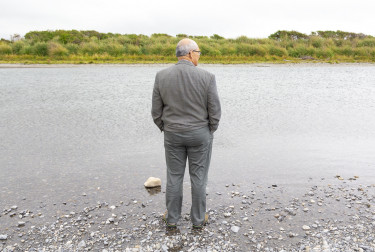
Approaches
1. Te Tiriti o Waitangi: Commitment and application of Te Tiriti o Waitangi is evident throughout the organisation
Te Tiriti o Waitangi (Te Tiriti)b; is a foundation document that recognises Māori as rightful indigenous peoples of Aotearoa; the obligation of the Crown to protect their interests and the expectation that there will be equal ‘rights and privileges.’ Te Tiriti is increasingly being used as an equity framework, an equity control measure and anti-racism praxis.c2 It can also be applied to communities where health inequities and over-representation in the prevalence of cancer prevail.
Cancer Society NZ is not a Māori health provider nor a Crown agent; instead the Society positions itself as a party to Te Tiriti o Waitangi with responsibilities to ensure that Māori attain similar health outcomes as other New Zealanders. The principles and values underpinning Te Tiriti o Waitangi must be applied to all aspects of CSNZ operations, strategies, and aims. As a Te Tiriti led organisation CSNZ will help reduce inequities for Māori and for all New Zealanders.
2. Kotahitanga: Everyone is aware of and enabled to address inequities
Strengthening everyone’s awareness about inequity enables a sense of agency and urgency. The CSNZ has over 3,200 staff, volunteers and board members. Positions within the Society include, but are not limited to, health promoters, cultural advisors, scientific advisors, board members, researchers, massage therapists, psychologists, nurses, counsellors, social workers, dieticians, residential staff, cleaners, support workers, receptionists, executive assistants, accountants, service managers, chief executives, event managers, communications co-ordinators, fundraisers, and volunteers in a range of roles. All can directly or indirectly impact cancer inequities every day. Educating and mobilising the whole organisation is a key equity priority.
3. Mana Taurite: Equity is embedded in all policies, structures, systems and services
Cancer inequities are complex with many causes. One key driver of cancer inequities is institutionalised d racism. Institutionalised racism is a pattern of differential access to resources, culturally appropriate services, social legitimation and political power that disadvantages some groups while advantaging others.3 The cancer continuum is replete with policies, structures, systems and services that are inequitable.4
Policies, systems and processes within CSNZ impact on equity goals. As an example, CSNZ does not have a diversity policy although there is some agreement that reflecting the demographics of the population in the demographics of the workforce improves health outcomes.5 In order to increase equitable health outcomes CSNZ will review all its policies, systems and processes and embed equity and anti-racism practice.
Equitable structures and service delivery is fundamental to reducing cancer inequities. CSNZ provides a range of services including supportive care, health promotion, information and resources, accommodation, advocacy and research. CSNZ agrees that the degree of comfort individuals and whānau feel when seeking health services impacts on their use of services and subsequently, their health outcomes. Delivering accessible and appropriate care is an important element in determining both the willingness of people to access the service and the success of any care then delivered.6
Equitable service delivery can only happen if there is authentic power sharing with affected communities from the beginning.7 Significant research shows that communities must be enabled to design or co-design services that fit their current and future needs. For example, communities that are geographically remote may need services that go to them; low socio-economic families may need extra support to access services. CSNZ will work with these communities to meet their needs and equitably deliver services.
In relation to ethnic inequities CSNZ respectfully positions itself as a service provider to New Zealanders, while acknowledging that there are some services that are not culturally appropriate for CSNZ to deliver.e In these situations, it is more appropriate to support Māori/Pacific or other health providers instead. CSNZ will partner local providers and support people to access services.
4. Mātauranga: Research improves equitable cancer outcomes across the continuum for all New Zealanders.
Research is a powerful tool that can contribute to either the increase or decrease of health inequities.8 Research agendas can have an equity positive effect if designed equitably. Historically cancer literature has disproportionately privileged bio-western ideology and sciences9 and the overreliance on science from within western scholarship to address Māori issues has long been argued as inequitable.10 Māori have the right to maintain control, protect and develop research priorities from within Māori epistemologies (ways of knowing). Further support for mātauranga Māori research is critical to reducing Māori inequities. CSNZ will embed equity and mātauranga Māori into all research agendas.
5. Whaitaua: CSNZ advocacy improves equity outcomes across the continuum for all New Zealanders.
Advocacy is an important tool to help to reduce and eliminate inequities created by political, economic, biological, social, cultural, behavioural and environmental factors.11 12 An equity in all policy approach across government is crucial to improving equity outcomes.13 As a trusted voice in the cancer sector, CSNZ will continue to advocate for equity in all public policy.
The cancer continuum encompasses over a hundred thousand people14 including volunteers, those who work in policy, prevention, primary, secondary, tertiary and palliative care. Across these services are public providers, private providers and non-governmental organisations. CSNZ acknowledges that advocacy to reduce inequities must engage numerous groups of people from within the continuum. CSNZ will continue to support, advocate and enable the whole cancer continuum to address equity issues.
CSNZ also acknowledges that communities that experience inequities must be enabled and supported to have a voice. For example; Māori have a right to assert Mana Motuhake and Tino Rangatiratanga and therefore are best to lead advocacy campaigns pertaining to Māori. CSNZ will support Māori leadership and positions itself as an ally in this respect. Across all communities and advocacy campaigns CSNZ will continue to support and enable communities to advocate for healthier futures.
6. Haepapatanga ki te hapori: Accountability mechanisms are embedded throughout the organisation
Investment in monitoring and evaluation is critical to reducing cancer inequities.15 An equity accountability framework that includes every level of CSNZ will ensure that these equity goals are being worked on and eventually met. CSNZ currently has three main levels of influence – as a whole organisation, as individual divisions and as individuals.
Organisational: An accountability mechanism for the whole organisation will enable overall progress towards equity to be monitored.
Divisional: Another accountability mechanism within each division (including National office) will ensure that divisions are making progressing towards the equity goals.
Individuals; particularly those with decision-making responsibilities can inextricably increase or decrease cancer inequities through inequitable decisions. An accountability framework that includes individuals will ensure an intrinsic response to health inequities.16
CSNZ Equity Accountability framework should include:
- An organisation-wide accountability and monitoring mechanism
- Accountability and monitoring mechanisms at divisional level; this includes national office
- Equity performance indicators in all management job descriptions
- Commitment to Te Tiriti o Waitangi and improving equity in all job descriptions, board member agreements and volunteer agreements
7. Mahi Arataki: Our equity strategies are sustained and responsive to changing equity needs
Embedding equity into CSNZ is a significant change management project. The organisation will need to invest in specific positions, like equity advisors or similar, to ensure the strategies to address inequity are safe, equitable and sustained. Close working relationships with other organisations like Hei Ahuru Mōwai, the Ministry of Health (MOH) and district health boards (DHBs), Hauora Providers, whānau, hapū and iwi, Pacific healthcare providers, Stop Institutional Racism Rōpū (STIR), primary care (particularly rural GPs), New Zealand Nurses Organisation (NZNO), universities and other research groups, and other stakeholders will be critical.
The equity goals will also need to be responsive to emerging issues and forecasted trends. For example; the health system is and will continue to be fiscally challenged and yet being affected by cancer is projected to increase by 50% in the next 15 years.17 The projection of cancer incidence coinciding with financial constraints will significantly impact the equity landscape. An ongoing change management approach that includes equity specific resourcing will ensure CSNZ progresses its equity vision.
8. Kaitiakitanga: Sustainable and eco-friendly processes are embedded throughout the organisation
Human health is fundamentally reliant on the planet’s health. Māori and all people’s cultural survival and wellbeing is inextricably linked to the health of Papatūānuku mother earth.18 Equity as a position and an action must also acknowledge the interrelationship of all living things and seek to rebalance all systems. Ecosystem restoration is not just about remedial application; it is equally about the reinstatement of humans to their rightful place as kaitiaki (guardians).19 From a rongoā Māori view, the inclusion of this as an overall goal aligns to mātauranga Māori in that there can be no mauri ora (wellbeing) without taiao (environmental) wellbeing. CSNZ acknowledges that reorienting all its activities to reduce the overall impact on the ecosystem will increase the health status for all people.
The Cancer Society New Zealand’s goals and approaches to equity are formulated from international and national evidence. The following pages describe cancer inequities and how modifiable contributors like racism, socio economic status, geography, health care processes and structures can impact cancer inequities.
1 - Cancer inequities
Cancer inequities can be defined as inequitable actions that result in inequitable outcomes, and/or a lack of action that results in inequitable outcomes. Cancer is one of the leading causes of death in Aotearoa New Zealand; inequities in cancer can be seen across ethnicity, sex, age, geography and socio-economic status.20
Factors that contribute to the incidence of cancer arise at two levels - individual patient level factors and factors affecting the environment and social determinants, such as poverty, education, racism, and work environments.21
Factors that affect cancer treatment and outcomes arise at three levels – factors at the individual patient level; differences in health care processes; and how the structure of the health system itself advantages or disadvantages population groups.22
2 - Ethnic cancer inequities
The indigenous and most marginalised populations in Aotearoa New Zealand carry disproportionate levels of cancer burden. Māori and Pacific people have higher rates of preventable cancers as well as worse survival and higher mortality than other New Zealanders.23 Pacific men have higher rates of lung and liver cancer, and Pacific women have higher rates of breast and cervical cancers, compared with the rest of the New Zealand population.24 In the 2006 census, nearly seven percent (300,000) of the total New Zealand population identified themselves as Pacific. In addition, seven percent of Māori also claimed Pacific ancestry in the same census.25 It is important to note that Māori and Pacific populations will continue to grow faster than New Zealand’s population overall, so will increase their share of total population.26 Other ethnicities that may need consideration in the future include Asian, migrant and refugee whānau. Ethnic inequities will have an impact on the health system, the cancer continuum and all equity policies going forward.
3 – Māori and cancer inequities
Kia mataara/please be aware: the following pages will provide further information of cancer inequities for Māori in detail. Each data point represents a person, a whānau and a whakapapa. It is important to acknowledge that seeing these data figures may be confronting; please keep yourself safe when reviewing this information.
The most significant cancer burden across incidence, mortality and impact axis is on the Māori population. Māori have an approximately 20% higher age-standardised incidence rate, and an 80% higher age-standardised mortality rate for cancer overall compared to non-Māori.27 28 Consistent differences which can be seen over lung, breast, stomach, prostate and cervical cancers all contribute to the overall cancer disparities for Māori.29
4 - Institutionalised racism
Increasingly cancer research has shown that Māori health inequities are contributed to by institutionalised racism.30 Institutionalised racism can be described as action or inaction resulting in differential access to; funding, resources, culturally appropriate services, culturally competent workforces and political power.31 Sites of institutional racism can be found across numerous levels of the health system some of which are detailed below. 32
At a primary care level evidence of differences are pronounced. Once age was taken into account, Māori overall obtain fewer diagnostic tests, less effective treatment plans and are referred for secondary or tertiary procedures at lower rates than non-Māori patients.33 For example; in one study the authors found that doctors spent 17% less time (two minutes out of a 12 minute consultation) interviewing Māori when compared to non-Māori patients.34
Institutionalised racism also exists at national policy level. In 2006 the Ministry of Health (MOH) directed that the Treaty of Waitangi clause be removed from official documents in the health and disability sector, changing the reference to “the way forward.”35 By removing reference to the Treaty at that time, the MOH essentially silenced Māori rights to equitable health and accountability on behalf of the crown.
Institutionalised racism is also about lack of action in the face of need. For example; Māori form 15% of the population36 and experience the highest and most complex health needs of all ethnicities, yet Māori nurses make up only seven per cent of the nursing workforce.37 Further workforce investment is critical to reducing the overall cancer disparities for Māori.
There has also been growing concern about the disinvestment of public funding to ensure that the Smokefree 2025 goal is met. Current ‘business as usual’ modelling suggests that non-Māori in New Zealand may achieve the below 5% target, but Māori will not.38 Smokefree 2025 will contribute to overall cancer equity therefore increased investment in tobacco control is crucial.
Within the health funding space evidence shows that Māori health providers have been discriminated against and receive inequitable resourcing compared to non-Māori providers; Māori providers have stricter outcome criteria, higher compliance costs and shorter funding contracts.39
Pay disparities, of up to approximately 25%40 exist for staff of Māori health providers when compared to other employees in the health sector and this can occur in cases where there are comparable qualifications. Whilst these pay disparities were acknowledged in 2016 by the MOH, they are yet to be resolved.41 Māori health providers are critical to reducing Māori health disparities and provide much needed services to survivors and their whānau.42 When viewed from within the overall cancer continuum these examples of inequitable treatment of Māori health providers contribute to cancer disparities.
Evidence of racism has also been found within the cancer care pathway.
The authors of one colon cancer study found Māori with Stage III colon cancer were not significantly disadvantaged at any one stage of the pathway but rather accumulated disadvantage throughout their journey, including being less likely to receive adjuvant chemotherapy, and experiencing longer waiting times in comparison to non-Māori.43
In a sentinel lung cancer study, the authors found evidence of Māori being disadvantaged, even though it is well known that Māori have a higher lung cancer risk and mortality. Compared to non-Māori, Māori patients were more likely to wait longer for treatment, had different treatment options, and were less likely to be referred for curative treatments than non-Māori.44
A further 2012 study which used data from the 2006/7 New Zealand Health Survey, found that racial discrimination in health care and other domains was associated with lower odds of breast and cervical cancer screening among Māori women.45
Across the cancer continuum Māori experience small but consistent disadvantages across the care pathway.46
Diametrically, this means that non-Māori/non-Pacific experience consistent advantages across the care pathway.
In summary, institutionalised racism can be found in nearly all levels and structures of the health system. It is also paramount to note that institutional racism is a system mediated through people.47
For the system to address inequities the whole sector including CSNZ, requires non-Māori to reflect on their professional practice, overall privilege and the impact of normalising the dominant monoculturalism. Structural analysis and individual reflective practice need to be part of everyday practice.48
5 - Geographical inequities:
Geography plays a significant part in overall cancer inequities. In some areas like Northland and Otago, getting to doctors’ appointments can be whole day excursions with travel taking up to three hours each way. Taking time off work, provision of childcare and transport costs create further barriers to access. The location of cancer services also impact overall cancer inequities. Most cancer services are concentrated in the main population centres making patient access significantly harder for some New Zealanders.49 An effective National Travel Assistance scheme and further service delivery considerations are critical to avoid worsening inequities for those living in rural areas.
6 - Socio-economic inequities:
Consistent evidence shows that economic factors contribute to cancer inequities. Overall cancer incidence and mortality are associated with increasing socioeconomic deprivation.50 People in lower paid occupational classes spend a greater proportion of their lives with ill-health and/or disability and this greatly effects their quality of life.51 52
Cancer treatment involves numerous costs for whole families. Financial costs are barriers to accessing care; these include the costs of GP visits, prescriptions,53 time off work, childcare, food and accommodation.54 A third of families with children undergoing cancer treatment have had to borrow money to meet financial commitments associated with care.55 Adults undergoing cancer treatment have increased burden as they may be the income earner. Māori are further disadvantaged due to the accumulative effect of colonisation and so are less likely to have the same level of financial resources when compared to non-Māori.56
The private sector and access to private insurance can also impact cancer inequities. Private care offers many advantages, like shorter waiting times and possibly better outcomes. However, there are socio-economic differences for those seeking private services. Those who are in the higher socioeconomic strata have more resources to pay for the advantages of private services.57
Any fiscal challenges to the cancer continuum, however slight, are more likely to impact lower socioeconomic groups than those who are more affluent. Equitable policies, structures, systems and services across the cancer continuum will help alleviate these socio-economic inequities.
Glossary
Whāinga Matua – purpose
Kotahitanga – unity
Mana Taurite – equity
Mātauranga – Māori knowledge
Whaitaua – advocacy
Haepapatanga – Accountability
Hapori – community
Mahi Arataki – guidance
Kaitiakitanga – guardianship
Whānau – family
Hapū – subtribe
Iwi – tribe
Mauri ora - Wellbeing
Cancer Society New Zealands’ Equity Charter
(Including all divisions, National office and Daffodil Day Enterprises)
Author: Teresa Goza (Ngāti Kauwhata, Ngāti Haua, Ngāti Rereahu, Ngāti Matakore, Ngāti Haua, Ngāti Unu, Ngāti Raukawa) and kaumatua Brian Emery and Mason Durie.
Reviewers/contributors: Te Rōpū Māori a Te Kāhui Matepukupuku o Aotearoa and Shelley Campbell, Shayne Nahu, Natasha Judd, Rebecca Gilbert, Henare Kingi, Janine Luke-Taamaru, Cherie Rissetto, Wayne Borrell, Ellen Fisher, Tira Albert, Chris Pihema, Rawiri Tuhiwai-Ruru (kaumatua and survivor and Emma Osborne.
Expert Reviewers and contributors: Sir Mason Durie, Bridget Robson (Te Rōpū Rangahau Hauora a Eru Pōmare, University of Otago) Dr Nina Scott (Hei Ahuru Mowai), Dr Heather Came (STIR, Teaupua Waiora - AUT), Dr Chris Jackson (Cancer Society Medical Director).
Date Approved: 27 September 2019
Review Date: June, 2024
1 Ministry of Health, 2019. Retrieved from https://www.health.govt.nz/about-ministry/what-we do/workprogramme-2018/achieving-equity
2 Came, H., McCreanor, T., Manson, L., & Nuku, K. (2019). Upholding Te Tiriti: Ending institutional racism and Crown inaction on health equity. New Zealand Medical Journal, 132(1492), 62-66.
3 Came, H (2014) “Sites of institutional racism in public health policy making in New Zealand” Social Science and Medicine 214.
4 Goza, T. A claim brought against the crown for racism against Māori and the privileging of non-Māori/non-Pacific adults across the continuum. WAI2575. Health and Outcomes inquiry. Waitangi Tribunal. Wellingon, New Zealand
5 Russell, L., Smiler, K., & Stace, H. (2013). Improving Māori health and reducing inequalities between Māori and non-Māori: Has the primary health care strategy worked for Māori? An evaluation of the period 2003-2010. Wellington, New Zealand: Health Research Council, Ministry of Health.
6 Durie M. (2001) Mauri Ora: The Dynamics of Mäori Health. Auckland: Oxford University Press
7 Chin, M. H., King, P. T., Jones, R. G., Jones, B., Ameratunga, S. N., Muramatsu, N., & Derrett, S. (2018). Lessons for achieving health equity comparing Aotearoa/New Zealand and the United States. Health Policy. doi:10.1016/j.healthpol.2018.05.001
8 Wyeth, E. H., Derrett, S., Hokowhitu, B., Hall, C., & Langley, J. (2010). Rangatiratanga and Ōritetanga: responses to the Treaty of Waitangi in a New Zealand study. Ethnicity & health, 15(3), 303-316.
9 Goza, T. A claim brought against the crown for racism against Māori and the privileging of non-Māori/non-Pacific adults across the continuum. WAI2575. Health and Outcomes inquiry. Waitangi Tribunal. Wellingon, New Zealand
10 Smith, L. (1999). Decolonizing Methodologies Research and Indigenous Peoples. Dunedin, New Zealand. University of Otago Press
11 Ottawa Charter (1986) First International Conference on Health Promotion, Ottawa. Retrieved from https://www.cph.co.nz/wp-content/uploads/tcd0002.pdf
12 Robson, B. & Ellison-Loschmann, L. (2016). Māori and cancer care in Aotearoa/New Zealand – response to disparities European Journal of Cancer Care 25, 214-218
13 STIR: Stop Institutional Racism. (2019). Submission to the Health Sector Review Consultation. Auckland, NZ
14 Ministry of Health. 2016. Health of the Health Workforce 2015. Wellington: Ministry of Health (pg 2). Retrieved from https://www.health.govt.nz/system/files/documents/publications/health-of-health-workforce-
2015-feb16_0.pdf
15 Sarfati, D., Jackson, C., Macfarlane, S., Bissett, I., Robson, B., Gurney, J., Kemp, R., James, N., Adler, J., Scott, N & McMenamin J. Cancer Care at a crossroads, time to make a choice. NZMJ 12 April 2019, Vol 132 No 1493
16 STIR: Stop Institutional Racism. (2019). Submission to the Health Sector Review Consultation. Auckland, NZ
17 Ferlay J, Colombet M, Soerjomataram I, et al. Global and Regional Estimates of the Incidence and Mortality for 38 Cancers: GLOBOCAN 2018. In. Lyon: International Agency for Research on Cancer/World Health Organization; 2018
18 Fox, C., Reo, J., Turner, D., Cook, J., Ditrui, F., Fessell, B., Jenkins, J., Jonhson, A., Rekena, T., Riley, C., Turner, A., Williams, J. & Wilson, M. (2017). “The river is us; the river is in our veins”: redinfing river restoration in three indiengous communities. Sustain Science, 12, Retrieved from: https://link.springer.com/article/10.1007/s11625-016-0421-119 Spinks, A. (2018). Restoring the Mauri of Coastal Dune Lake Ecosystems: The case study of Lake Waiorongomai, Otaki, Aotearoa/New Zealand. PhD Thesis, Massey University, Palmerston North (pg 142)
20 Hill, S., Safarti, D., Robson, B., Blakely, T. (2013). Indigenous inequalities in cancer. What role for healthcare? ANZ Journal of surgery. (83) 1-2, 83-86.
21 Robson, B., Purdie, G., & Cormack, D. (2006) Unequal impact: Māori and Non-Māori cancer statistics 1996–2001. Ministry of Health, Wellington
22 Hill, S., Safarti, D., Robson, B., Blakely, T. (2013). Indigenous inequalities in cancer. What role for healthcare? ANZ Journal of surgery. (83) 1-2, 83-86.
23 Teng, A., Atkinson, J., Disney, G., Wilson, n., Sarfati, D., Mcleod, M & Blakely, T. Ethnic inequalities in cancer incidence and mortality; census-linked cohort studies with 87 million years of person-time follow-up. BMC Cancer 2016; 16(1):755
24 Ministry of Health. Pacific Health: Pacific People’s Health. nd. Retrieved from http://www.moh.govt.nz/moh.nsf/indexmh/pacifichealth-health.
25 Statistics New Zealand. QuickStats about Mäori: 2006 Census. nd. Retrieved from http://www.stats.govt.nz/census/2006-census-data/quickstats-about-mäori/2006- census-quickstats-about-mäori-revised.htm.
26 Robson, B., G. Purdie, and D. Cormack, Unequal Impact II: Māori and Non-Māori Cancer Statistics by Deprivation and Rural-Urban Status, 2002-2006 2010, Ministry of Health: Wellington.
27 Ministry of Health. Cancer: New registrations and deaths 2011. Wellington: Ministry of Health, 2014.
28 Sarfati, D., Jackson, C., Macfarlane, S., Bissett, I., Robson, B., Gurney, J., Kemp, R., James, N., Adler, J., Scott, N & McMenamin J. Cancer Care at a crossroads, time to make a choice. NZMJ 12 April 2019, Vol 132 No 1493
29 Signal, V. C. (2016). Making sense of Stomach cancer Inequities in Aotearoa New Zealand (Thesis, Doctor of Philosophy). University of Otago. Retrieved from http://hdl.handle.net/10523/6681
30 Robson, B. Chapter 3 in: Understanding Health Inequalities in Aotearoa New Zealand. Dew, K., Matheson, A 2nd ed. Otago University Press. Dunedin. New Zealand
31 H Came, “Sites of institutional racism in public health policy making in New Zealand” (2014) 106(0) Social Science and Medicine 214.
32 Goza, T. Mapping the sites of racism across the New Zealand cancer continuum. 2018. Presentation to the Indigenous Peoples and cancer symposium. Wellington. New Zealand.
33 Peter Jansen and David Jansen, (2011), ‘Mäori and Health’, in Cole’s Medical Practice in New Zealand, Medical Council of New Zealand, pp.48-60 (p.53). Accessed online at http://www.mcnz. org.nz/assets/Newsand=Publications/Coles/Chapter-5.pdf
34 Peter Jansen and David Jansen, (2011), ‘Mäori and Health’, in Cole’s Medical Practice in New Zealand, Medical Council of New Zealand, pp.48-60 (p.53). Crengle S., Lay-Yee R., Davis P., Pearson JA. (2006). “Comparison of Mäori and non-Mäori patient visits to doctors’. National Primary Medical Care Survey, Report 6. Accessed online at http://www.moh.govt.nz/notebook/
nbbooks.nsf/0/D222772D6D01D0FACC25748C007D64D8/$file/ NatMedCaReport6Dec2005.pdf on 26 June
2012
35 The way forward: for Treaty statements in the health and disability sector. NGO Report to the Committee on the Elimination of Racial Discrimination. Retrieved from http://www.converge.org.nz/pma/CERD71-PMA3.pdf
36 Statistics New Zealand. (2016). Māori population. Retrieved from http://www.stats.govt.nz/browse_for_stats/people_and_communities/maori/maori-population-article-2015
37 Nursing Council of New Zealand. (2015). The New Zealand nursing workforce: A profile of nurse practitioners, registered nurses and enrolled nurses 2014-2015. Wellington, New Zealand: Author.
38 Bode, University of Otago Researchers criticise government smokefree 2025 strategies. Retrieved from: https://www.critic.co.nz/news/article/6854/university-of-otago-researchers-criticise-governme
39 Came, H., Doole, C., McKenna, B., & McCreanor, T. (2017). Institutional racism in public health contracting: Findings of a nationwide survey from New Zealand. Social Science and Medicine. doi:10.1016/j.socscimed.2017.06.002
40 Human Rights Commission. (2011). A fair go for all? Structural discrimination and systemic barriers to ethnic
equality. Wellington, New Zealand
41 STIR: Stop Institutional Racism. (2019). Submission to the Health Sector Review Consultation. Auckland, NZ
42 Slater, T., Matheson, A., Davies, C., Goodyear, C., Holdaway, M., & Ellison-Loschman, E. The role and potential of community-based cancer care in Aotearoa/New Zealand. NZMJ 19 February 2016, Vol 129 No 1430 https://www.nzma.org.nz/__data/assets/pdf_file/0008/47195/Slater-1579-NZMJ-1430-FINAL.pdf
43 Hill S, Sarfati D, Blakely T et al. Survival disparities in Indigenous and non-Indigenous New Zealanders with colon cancer: the role of patient comorbidity, treatment and health service factors. J. Epidemiol. Community Health 2010; 64: 117–23.
44 Stevens W, Stevens G, Kolbe J, Cox B. Ethnic differences in the management of lung cancer in New Zealand. J. Thorac. Oncol. 2008; 3: 237–44
45 Harris, R., Cormack, D., Tobias, M., Yeh, L., Talamaivao, N., Minster, J & Timutimu, R. (2012), ‘Self-reported experience of racial discrimination and health care use in New Zealand: results from the 2006/07 New Zealand Health Survey’, American Journal of Public Health. Accessed online at http://ajph.aphapublications.org/doi/pdf/10.2105/ AJPH.2011.300626 on 31 May 2012
4646 Sarfarti, D. 2018. (Personal communication)
47 Cormack, D. Racism and Health. Oral Presentation at Otago University 6, June, 2019
48 Came, H., Warbrick, I., Doole, C., Hotere-Barnes, A., & Sessa, M. (2019). He hokinga ki te mauri: strengthening te Tiriti o Waitangi public health education in tertiary education settings. Teaching in Higher Education, 1-16. doi:10.1080/13562517.2019.1613357
49 Cormack D, Ratima M, Robson B, Brown R, Purdie G. Access to Cancer Services for Maori. Wellington: Ministry of Health, 2005.
50 Robson, B., Purdie G. & Cormack D. (2010). Unequal Impact II: Māori and non-Māori Cancer Statistics by Deprivation and Rural-Urban Status. 2002-2006. Ministry of Health, Wellington, New Zealand.
51 Davis, P., Graham, P., Pearce, n. (1999). Health expectancy in New Zealand 1981-1991: social variations and trends in a period of rapid social and economic change. Journal of Epidemiology & Community Health, 53:519-27.
52 Robson, B. Chapter 3 in: Understanding Health Inequalities in Aotearoa New Zealand. Dew, K., Matheson, A 2nd ed. Otago University Press. Dunedin. New Zealand 53 Slater, T., Matheson, A., Davies, C., Goodyear, C., Holdaway, M., & Ellison-Loschman, E. The role and potential of community based cancer care in Aotearoa/New Zealand. NZMJ 19 February 2016, Vol 129 No 1430 https://www.nzma.org.nz/__data/assets/pdf_file/0008/47195/Slater-1579-NZMJ-1430-FINAL.pdf
54 Slater, T., Matheson, A., Davies, C., Goodyear, C., Holdaway, M., & Ellison-Loschman, E. The role and potential of community-based cancer care in Aotearoa/New Zealand. NZMJ 19 February 2016, Vol 129 No 1430 https://www.nzma.org.nz/__data/assets/pdf_file/0008/47195/Slater-1579-NZMJ-1430-FINAL.pdf
55 Dockerty J, Skegg D, Williams S. Economic effects of childhood cancer on families. J. Paediatr. Child Health 2003; 39 : 254–8.
56 Robson B, Harris R (eds).Hauora: Maori Standards of Health IV. A Study of the Years 2000–2005. Wellington: Te Roopuu Rangahau Māori a Eru Pomaru
57 Hill S, Sarfati D, Blakely Tet al. Survival disparities in Indigenous and non-Indigenous New Zealanders with colon cancer: the role of patient comorbidity, treatment and health service factors.J. Epidemiol. Com-munity Health2010;64: 117–23
Figures:
Ministry of Health: MĀORI HEALTH TRENDS 1990 – 2015 PROJECT. CANCER MODULE APPENDICIES.
Ministry of Health. Filed by Crown law, 28 February, 2019 in the Waitangi Tribunal Māori Health and
Outcomes Inquiry #Wai2575
